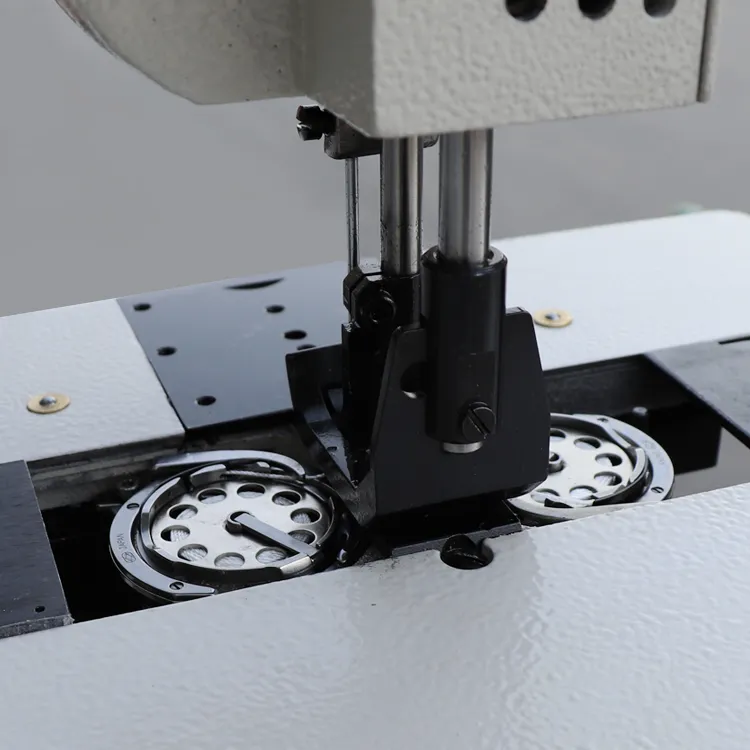lock stitch on sewing machine
Understanding Lock Stitch on Sewing Machines
Lock stitch is a fundamental sewing technique that is widely used in various applications, from garment manufacturing to quilting. This article will explore what a lock stitch is, how it works, its advantages and disadvantages, and why it remains a popular choice for sewing enthusiasts and professionals alike.
What is a Lock Stitch?
A lock stitch is created using a sewing machine that employs two threads the upper thread and the lower thread. The upper thread comes from the needle, while the lower thread originates from the bobbin. The unique mechanism of the sewing machine threads these two strands in a manner that they interlock, which is where the name “lock stitch” derives from. This interlocking of threads forms a secure and durable seam that is highly valued for its strength and neatness.
How Does a Lock Stitch Work?
When a sewing machine is in operation, the needle penetrates the fabric, carrying the upper thread through it. As the needle descends, it pushes the upper thread down toward the bobbin area. At the same time, the bobbin mechanism engages, allowing the lower thread to emerge and wrap around the upper thread. When the needle rises, the interlocking threads create a stitch that holds the fabric layers together.
This stitch formation process relies on the tension of both threads being properly adjusted. If the tension is too loose or too tight, the resulting stitch may either pucker or skip, leading to less-than-ideal seams. Most modern sewing machines feature automatic tension settings, but it’s essential for the user to fine-tune these settings based on the fabric type to achieve the best results.
Advantages of Lock Stitch
1. Strength and Durability Lock stitches are known for their strength, making them ideal for seams that need to withstand stress and tension, like those in denim or heavy fabrics.
lock stitch on sewing machine

2. Neat Appearance The interlocking nature of the lock stitch creates a smooth and neat finish on both sides of the fabric, which is particularly important for visible seams in garments.
4. Compatibility with Various Machines Almost all sewing machines, from basic home models to advanced industrial machines, can produce lock stitches, making them widely accessible for sewers at all skill levels.
Disadvantages of Lock Stitch
1. Limited Stretch While lock stitches are strong, they do not have much stretch, which can be a disadvantage when sewing fabrics that require elasticity, such as spandex or knits.
2. Learning Curve For beginners, mastering the lock stitch can take some time. Understanding how to correctly adjust thread tension and mastering the sewing machine itself are critical skills to develop.
3. Bobbing Issues Users may encounter problems with the bobbin, such as tension issues or jamming, which can interrupt sewing projects and require troubleshooting.
Conclusion
Lock stitch remains a staple in the world of sewing due to its reliability and versatility. Whether you're a novice exploring the craft or an experienced sewer producing high-quality garments, understanding the mechanics and applications of lock stitches can significantly enhance your sewing experience. From creating durable seams to achieving a polished look, the lock stitch holds a special place in the hearts of sewists and continues to be an essential technique in both home and industrial sewing environments. As you continue your sewing journey, mastering the lock stitch can elevate your skills and result in professional-looking final products.
-
Heavy Duty Leather Sewing Machine: A Must-Have for Professional LeatherworkNewsMay.28,2025
-
Leather Sewing Machine: Essential for High-Quality LeathercraftNewsMay.28,2025
-
Extra Heavy Duty Sewing Machine for Premium Leather ApplicationsNewsMay.28,2025
-
Walking Foot Cylinder Arm Sewing Machine: Precision and Power CombinedNewsMay.28,2025
-
Industrial Cylinder Arm Sewing Machine: Engineered for High-Performance StitchingNewsMay.28,2025
-
Cylinder Bed Sewing Machine: A Powerful Solution for Precision StitchingNewsMay.28,2025
-
Zigzag Sewing MachineNewsMay.12,2025





























